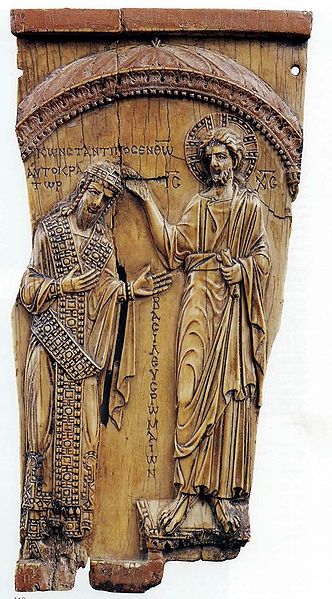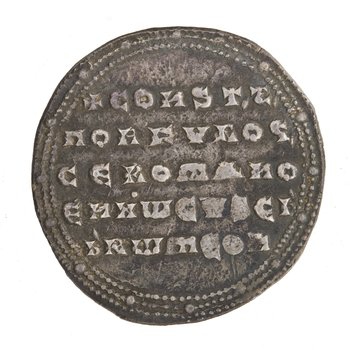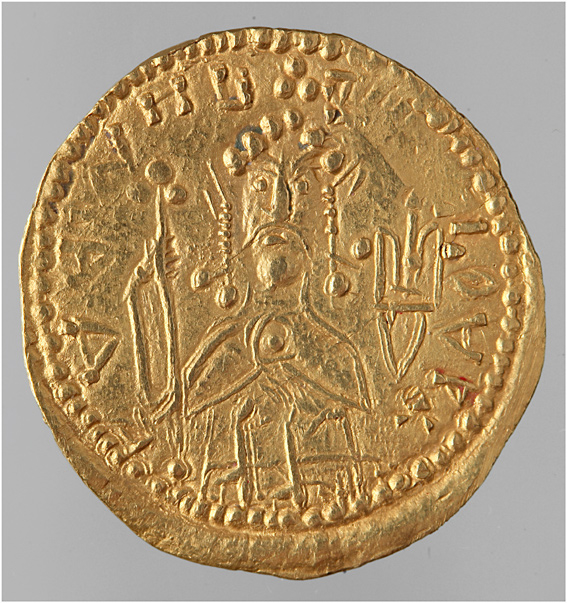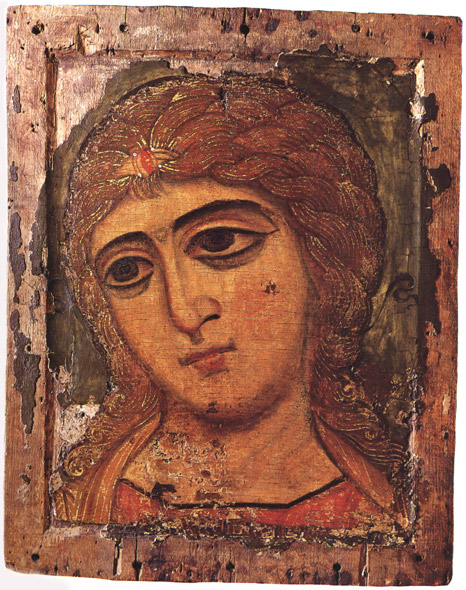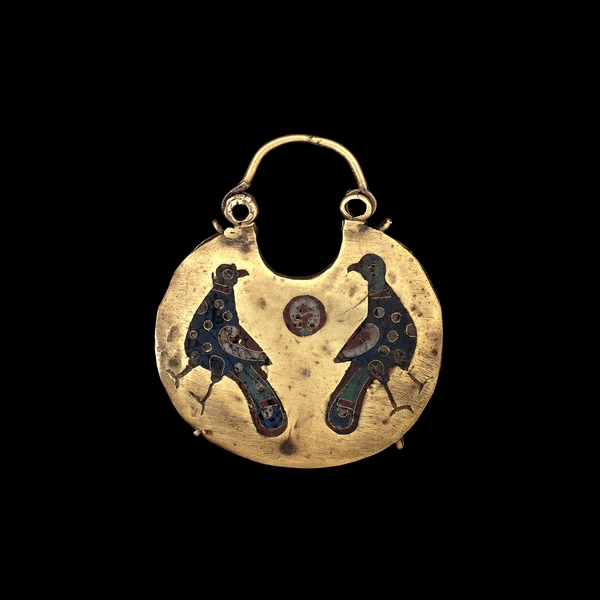Kiev was founded around 860 AD and became the capital of the medieval state of the Kievan Rus'. The state covered present-day Belarus, Ukraine and Russia. The Varangians played a major role in the formation and growth of the Kievan Rus' state; its rulers were Scandinavian princes and its people were native Slavs. Kiev was greatly influenced by Constantinople adopting aspects of its faith, art and culture. In the tenth century, Princess Olga became the first Christian ruler of Kiev, reigning as regent from 945 to 960. She visited Constantinople in 957 and was received by the Byzantine emperor Constantine VII Porphyrogennitos, who ruled from 945 to 959. During this trip, Olga converted to Christianity and the emperor became her godfather. Mastepieces of Byzantine art and luxury objects were transported to Kiev and vice versa. As such, Byzantine and Kievan artists exchanged knowledge of artistic technique and craftsmanship. The Kievan Rus' imitated COnstantinople's culture of sophistication and ostentation. They named their cathedral Haghia Sophia after the marvellous church of the Holy Wisdom in the Byzantine capital. Constantinople's Golden Gate also had a counterpart in Kiev. Vladimir the Great, Grand Prince of Kiev, modelled his coins based on the Byzantine coinage.
Kiev
The Russian Primary Chronicle (11th century) mentions: Olga went to Greece, and arrived at Tsar'grad. The reigning Emperor was named Constantine, son of Leo. Olga came before him, ...
